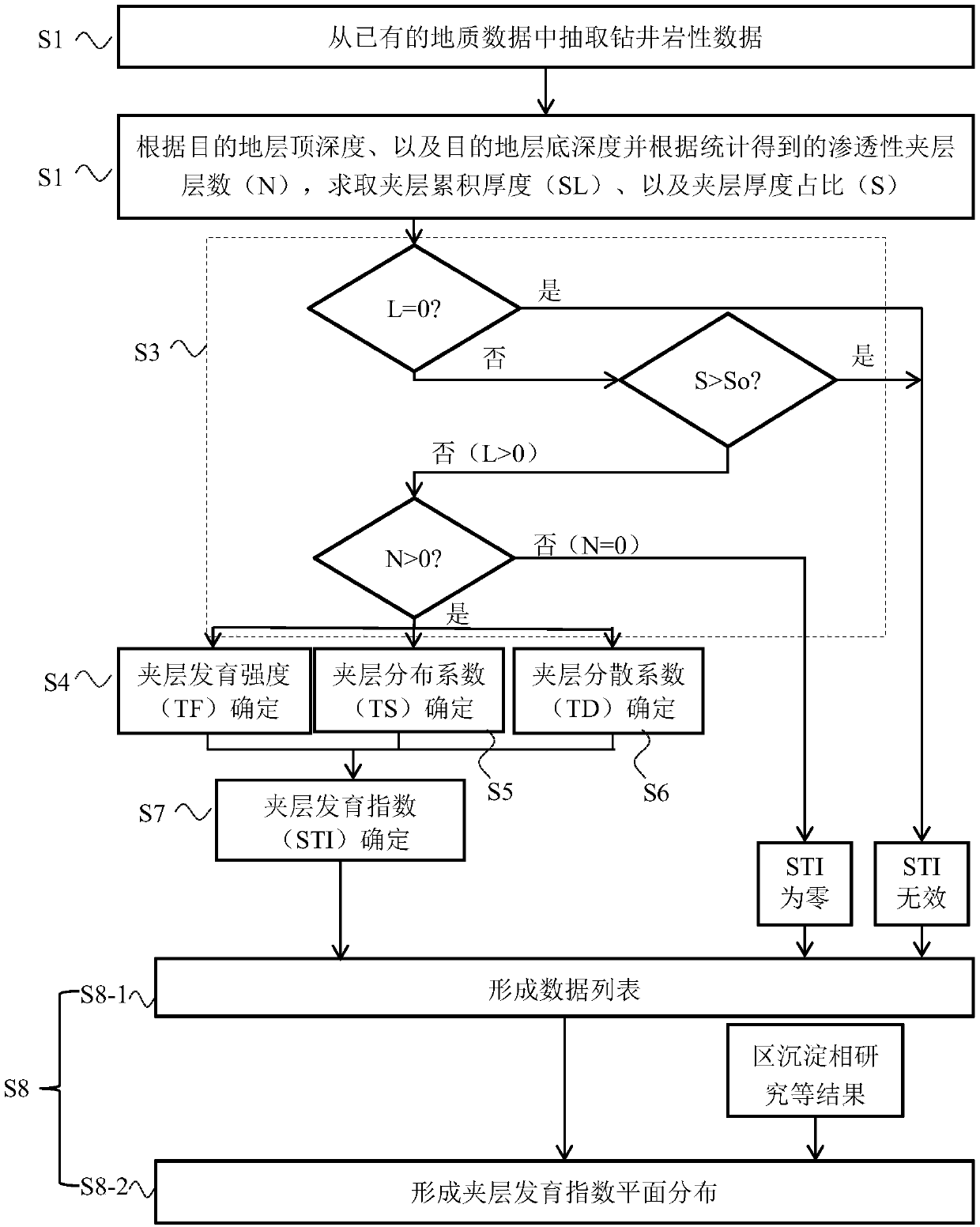Quantitative characterization method for development degree of permeable interlayer in shale
A quantitative characterization and developmental technology, applied in special data processing applications, instruments, electrical digital data processing, etc., to achieve the effect of broad application prospects
- Summary
- Abstract
- Description
- Claims
- Application Information
AI Technical Summary
Problems solved by technology
Method used
Image
Examples
Embodiment Construction
[0054] Hereinafter, embodiments of the present invention will be described with reference to the accompanying drawings.
[0055] The invention provides a method for quantitatively characterizing the development degree of permeability interlayer in mud shale, which mainly includes the following steps:
[0056] Data extraction and statistical steps: extract drilling lithology data from the existing geological data, including the depth of the destination layer top and the destination layer bottom depth, and count the number of permeable interlayer layers;
[0057] Steps for determining the development strength of the interlayer: according to the number of permeable interlayer layers and the thickness of the destination layer, determine the development strength of the interlayer;
[0058] The step of determining the interlayer distribution coefficient: according to the number of permeable interlayer layers, the depth of the top layer of the destination layer, and the depth of the ...
PUM
 Login to View More
Login to View More Abstract
Description
Claims
Application Information
 Login to View More
Login to View More - R&D
- Intellectual Property
- Life Sciences
- Materials
- Tech Scout
- Unparalleled Data Quality
- Higher Quality Content
- 60% Fewer Hallucinations
Browse by: Latest US Patents, China's latest patents, Technical Efficacy Thesaurus, Application Domain, Technology Topic, Popular Technical Reports.
© 2025 PatSnap. All rights reserved.Legal|Privacy policy|Modern Slavery Act Transparency Statement|Sitemap|About US| Contact US: help@patsnap.com



